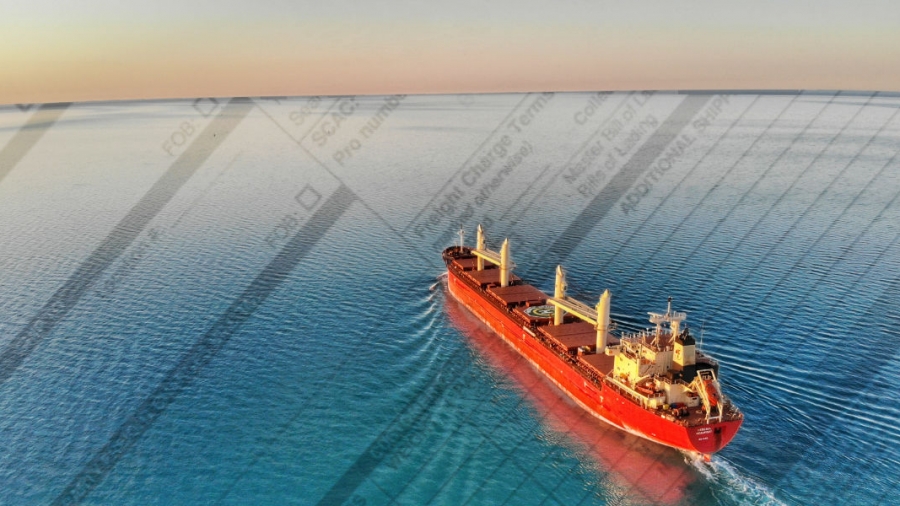A Bill of Lading and a Telex Release are vital to shipping and they are two items that you absolutely must know in the field of logistics. An Original Bill of Lading is a paper bill of lading that is issued to a customer. A Telex Release is an electronic release that is given in return for a surrendered bill of lading.
The Bill of Lading
The Bill of Lading, abbreviated as B/L, is one of the vital documents for the documentary chain of ocean freight.
Some mistakenly believe that the bill of lading is a contract between the buyer and seller. It is not such a contract nor is it a carriage contract between the carrier and shipper.
There are 3 things that a bill of lading documents.
- It provides evidence of a contract of carriage.
- That goods have been received.
- It proves the Document of Title to the goods covered by the bill of lading.
One of the more important aspects of an Original Bill of Lading is that it can be used as a negotiation tool between a buyer and a seller using a Letter of Credit.
Different Types
There are 3 different forms in which a bill of lading exists. They are:
- Straight Bill of Lading
- Order Bill of Lading/Negotiable Bill of Lading
- Seaway Bill of Lading
Straight Bill of Lading
The originally issued bill of lading to a “named” consignee is referred to as a Straight Bill of Lading.
The straight bill of lading is non-negotiable and non-transferable. For those reasons the cargo covered by the straight bill of lading can only be released to the named consignee. Remember, the straight bill of lading cannot by transferred to another party, even with an endorsement.
The straight bill of lading is evidence of the contract of carriage and receipt of goods.
Negotiable Bill of Lading/Order Bill of Lading
A Negotiable Bill of Lading or Order Bill of Lading is when a B/L is issued as originals and consigned “To Order”, “To Order Shipper”, or To Order of ABC Bank”.
As specified in the name, this is the only B/L type that is negotiable and transferable to another party if endorsed.
This type of bill of lading can be considered as evidence of the contract of carriage, the document title, and the receipt of goods.
Seaway Bill of Lading
The Seaway Bill of Lading is a B/L that is issued to a named consignee without the originals.
The Seaway Bill of Lading is also non-negotiable and non-transferable.
This type of B/L serves only as evidence of a contract of carrier and receipt of goods. It doesn’t serve as a Document of Title.
You might also hear a Seaway Bill of Lading referred to as an Express Release. This is because import release is quick with this kind of bill of lading.
What About the Original Bill of Lading?
Sorry, but there isn’t a bill of lading type named Original Bill of Lading.
The original Bill of Lading is a physical document of a Straight Bill of Lading or Order of Bill of Lading that’s been issued to shipper by the carrier at the port of lading.
In the regular shipping process, the goods release to the consignee at the destination only occurs upon turnover of one or more original Bills of Lading issued by the carrier.
There are only two circumstances in which cargo can be released without turning over the Original Bill of Lading.
- The original bill of lading was surrendered at the loading port, or elsewhere, to the carrier and the carrier releases a message to the destination port instructing for the cargo to be released without presenting the original bill of lading.
- A Seaway Bill of Lading was issued. Since an original is not issued for a Seaway Bill, nothing can be surrendered at a port.
Telex Release
When an Official Bill of Lading is surrendered at the loading port or elsewhere, for example a container is loaded in Laem Chabang, Thailand but the shipper is in Tokyo, Japan. The carrier or their agent will send a release authorization at the port of discharge. This is so the consignee can secure release of the cargo without presenting an Official Bill of Lading.
This type of release authorization is a “Telex Release”. This is a term still used today, despite referring to some vintage technology. These messages were transmitted using a Telex machine, TELEX is the acronym for Telegraph Exchange service.
The actual Telex machine was a simple teleprinter used to receive and send text-based messages via telegraph lines.
In practice, a Telex Release is sought and utilized by a shipper or consignee in the case of a Straight Bill of Lading.
Why?
The originals of a Negotiable/Order Bill of Lading is typically required for submission to a bank for negotiation purposes.
Following negotiation and payments, the bank will send the originals to the consignee for securing the release.
At that time the consignee will surrender the endorsed Original Bill of Lading to carrier for delivery of the order.
So What’s The Difference?
Laws and regulations vary between countries. Some countries, Brazil for example, will not allow the release of cargo with a telex release and insist that an original physical Bill of Lading be presented.
For the purposes of import release, either an endorsed Original Bill of Lading, Telex Release, or Seaway Bill may be used. However, no matter which type of documentation is being used for release of the cargo, both the shipper and consignee must follow proper documentary procedures to protect against fraud.



